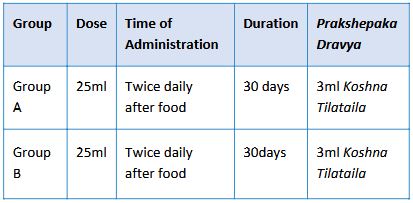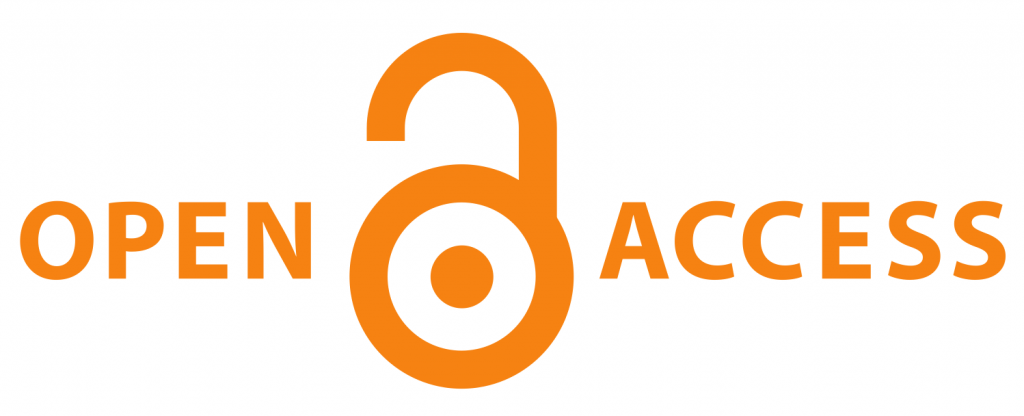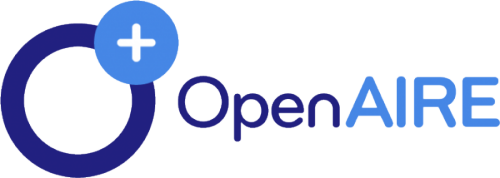A randomized controlled clinical study of Marichadi Kwatha in the management of Janusandhigata Vata
DOI:
https://doi.org/10.21760/jaims.9.11.7Keywords:
Janusandhigata Vata, Knee joint Osteo arthritis, Marichadi Kwatha, Rasnapanchaka KwathaAbstract
Background: Sandhigata Vata is a type of Vatavyadhi where the vitiated vata dosha specifically affects the joints with symptoms of Sandhishoola, Atopa Shopha, and Prasarana Aakunchana Vedana. Osteoarthritis mainly targets the knee joint, hip joint and certain small joints. OA is an important cause of disability and the second most common musculoskeletal problem in the world (30%) after back pain (50%). Hence Marichadi Kwatha and Rasnapanchaka Kwatha taken for present clinical study and results compared for checking the efficacy in Janusandhigata Vata. Methodology: 60 patients fulfilling the diagnostic and inclusion criteria were selected for a single blind randomized controlled clinical study. They were randomly allocated into 2 equal groups Group A and Group B. Group A subjects received Marichadi Kwatha in a dosage of 25ml Kwatha with 3ml Koshna Tila Taila twice daily after food for 30 days. Group B subjects received Rasnapanchaka Kwatha 25ml Kwatha with 3ml Koshna Tila Taila twice daily after food with for 30 days. Assessment was done on 0th day, 16th day, 31st day and 46th day. Results: Both groups showed significant improvements in all parameters based on clinical evaluation. However, within each group, analysis showed significant changes in most parameters with the exception of Atopa. When comparing both groups, there were no significant differences found. Conclusion: Both Marichadi Kwatha and Rasnapanchaka Kwatha showed significant effect in all parameters except in Atopa. On statistical comparison between the two groups there were no significant difference in the effect of both Marichadi Kwatha and Rasnapanchaka Kwatha.
Downloads
References
Acharya Agnivesha, Charaka Samhitha, Ayurveda Deepika Commentary of Chakrapanidatta, Edited by Vaidya Yadavji Trikamji Acharya, Chaukambha Surbharati Prakashan, Edition: Reprint 2008, Chikitsa Sthana, 28 th Chapter, Shloka no. 37, Page no. 618
API Text Book of Medicine, Edited by Sidharth N Shah, 8th Reprint Edition, Association of Physicians of India, Volume -1, 5th Chapter, Page no. 283
Pal C.P, Singh P, Chaturvedi S et.al. Epidemiology of knee osteoarthritis in India and related factor. IJOO50,518-522(2016). https://doi.org/10.4103/0019- 5413.189608
Sharangadhara, Sharangadhara Samhitha, English Translation by Himasagarachandramurthy P.H, 2nd Edition 2007, Chaukambha Press, Varanasi, 1 st Chapter, Shloka no.89-94, Page no. 126
Das Govind, Bhaishajya Ratnavali, Hindi Commentary by Ambikadattashasthri Published by Chaukambha Sanskrit Sansthan, Varanasi, 29th Chapter, Shloka no. 156 -161, Page no. 625
Chakrapanidatta, Chakradatta Chikitsa Sangraha, English Translation by Prabhakararao.G, Chaukambha Orientalia Varanasi, 22nd Chapter, Shloka no. 72- 75, Page no. 217
Acharya Sushrutha, Sushrutha Samhitha, Nibandha Sangraha commentary of Dalhana, Edited by Vaidya Yadavji Trikamji Acharya, Published by Chaukambha Publications Chikitsa Sthana, 4 th Chapter, Shloka no. 8, Page No. 420GHJHK
Sir Stanley Davidson’s Priciples and Practice of Medicine, Edited by John A.A. Hunter et al, 20th edition, Churchill living stone, 25th Chapter, Page no. 1100
Tripathi Indradeva, Gadanigraha, Revised Edition 2011, Chaukambha Sanskrit Sansthan, Varanasi, Volume 2nd, Kayachikitsa Khanda, 19th Chapter, Shloka no. 207, Page no. 517
Chakrapanidatta, Chakradatta Chikitsa Sangraha, English Translation by Prabhakararao.G Chaukambha Orientalia Varanasi, 25th Chapter, Shloka no. 7, Page no. 264















